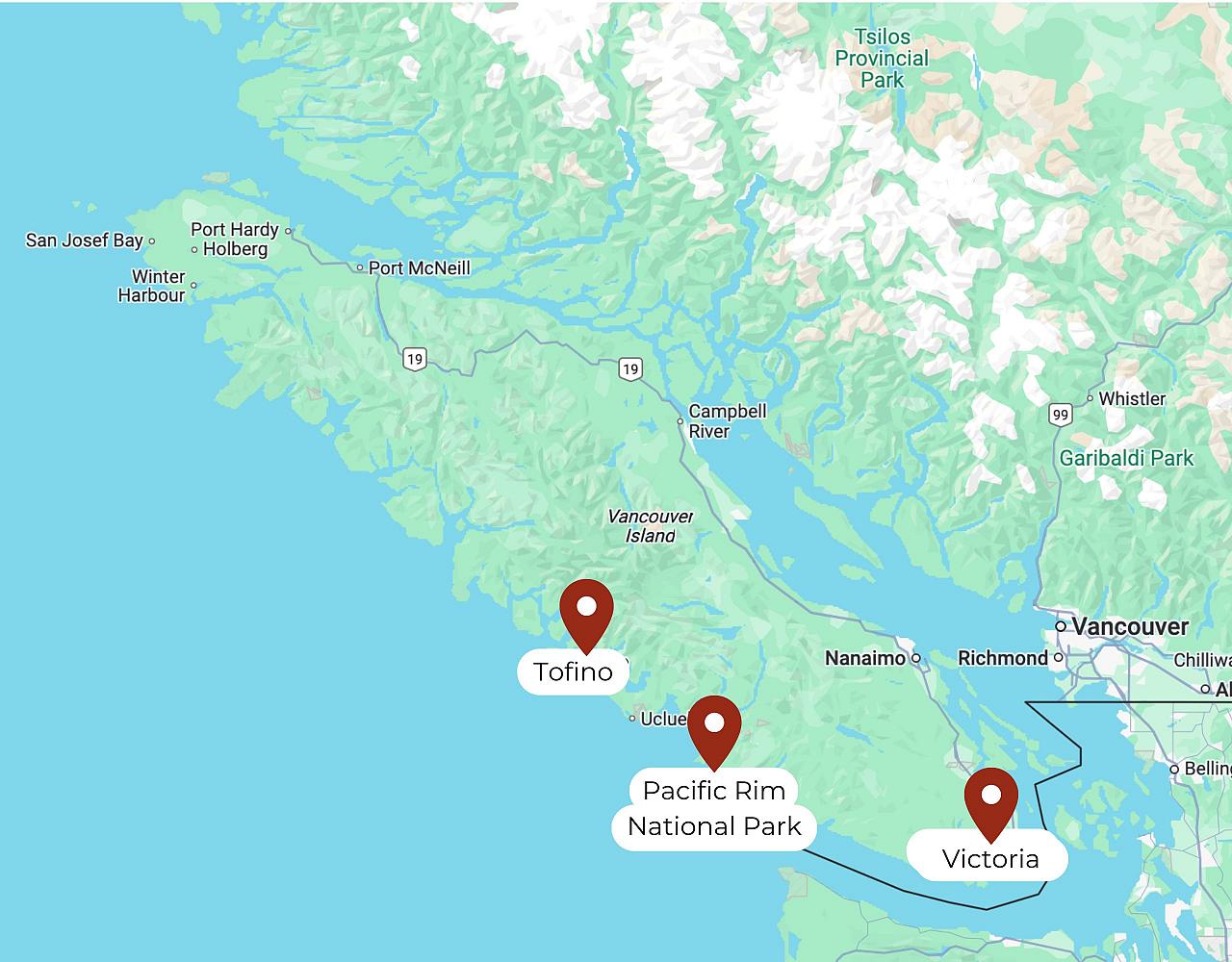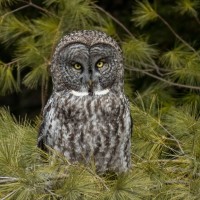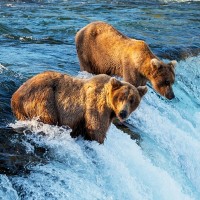- Overview
- Full Itinerary
- Photo Gallery
- Costing
- Travel Details
- Trip Reports
- Guide
- Map
- Know Before You Go
- Other Trips You May Like
Located off the mainland of British Columbia, Vancouver Island is stunningly beautiful with diverse habitats ranging from incredible beaches to amazing old-growth forests and high mountains. Add in some of the densest populations of Black Bear and Mountain Lion in North America, over 350 bird species, and a multitude of marine mammals just off the coast, this is an island not to be missed! We’ve chosen three of the best spots on the island to explore in detail as we watch an exciting array of wildlife backdropped by inspiring scenery.
We begin on the south end of Vancouver Island in the delightful city of Victoria, exploring both coastal and inland spots to see a great variety of birds, including an assortment of gulls, shorebirds, and songbirds like Chestnut-backed Chickadee and Bushtit. After two nights in Victoria, we move to the dramatic west coast to explore Tofino and the surrounding Clayoquot Sound. We have three nights here to savor this incredible part of the island. We enjoy two boat tours to search for Black Bear, Humpback Whale, Grey Whale, and pelagic birds such as Pink-footed Shearwater and Black-footed Albatross. In addition to exploring the waters around the island, we also spend time birding on the white sandy beaches and temperate rainforests in Pacific Rim National Park.
Moving back to the east coast of the island, we head to Campbell River, located at the south end of the Discovery Passage. Here, we have an exciting day exploring rivers to search for Grizzly Bear feeding on salmon and learn about traditional culture with a Homalco First Nation guide. Our tour comes to an end back in the vibrant city of Victoria, but you won’t soon forget this incredible island!




Tour Highlights
- Explore the wonderful city of Victoria known for its gardens; for birders—its shorebirds and gulls
- Visit the Nanaimo River Estuary, the largest on the island
- Be amazed at 800-year-old Douglas fir trees in the Cathedral Grove
- Find seabirds and marine mammals on two exciting boat tours from Tofino
- Search for bears, whales, otters, puffins, and songbirds!
- Dine on delicious fresh seafood and try local wines
- Visit the beautiful beaches and lush rainforests of Pacific Rim National Park
- Explore rivers near Campbell River to search for Grizzly Bear with a First Nations guide
- Enjoy the amazing scenery throughout Vancouver Island




Trip Itinerary
Itineraries are guidelines; variations in itinerary may occur to account for weather, road conditions, closures, etc. and to maximize your experience.
Wed., Sept. 3 Arrivals in Victoria
Welcome to Victoria! Located at the southern end of Vancouver Island, Victoria is known as the “Garden City” due to its many parks and gardens. We head to our hotel, situated in a beautiful part of the city near the downtown area and across from the ferry terminal.
Tonight, we gather for a welcome dinner to meet our guides and fellow travelers and prepare for an exciting adventure.
Accommodations at Best Western Inner Harbour, Victoria (D)
Thurs., Sept. 4 Birding in Victoria | Swan Lake Nature Sanctuary
Today, we begin our exploration of Vancouver Island. With a mild climate, beautiful beaches, temperate rainforests, and high mountains, it is sure to be an exciting trip filled with incredible scenery. And the diverse habitat means a wonderful array of birds and wildlife!
We start in Victoria, the picturesque capital of British Columbia. First inhabited by several First Nation groups, it was later colonized by the British in the mid-1800s. This British colonial past is evident throughout the city with its beautiful Victorian architecture and English-inspired gardens. Scenery in this coastal city is outstanding and on a clear day, the Olympic Mountains of Washington State in the US can be seen to the south.
There is no shortage of areas to visit for great birding in Victoria and we make the most of our time here. Some of the most prominent locales are around Esquimalt Lagoon, located west of the city. A shallow lagoon that is enclosed by a sand and gravel bar, this is a great spot for birds and we expect a large concentration of gulls here, including Glaucous-winged, Short-billed, and California. We may also spot a scarce Western Gull or the attractive Heerman’s Gull. We search the rocky shorelines for flocks of Black Turnstone and Surfbird as they feed.
In the afternoon, we visit several inland parks, including Swan Lake Nature Sanctuary, which includes both wetland and oak forest habitat and has recorded over 225 species of birds. These inland areas should be productive for Anna’s Hummingbird, Chestnut-backed Chickadee, Bushtit, and a variety of other songbirds.
Accommodations at Best Western Inner Harbour, Victoria (B,L,D)
Fri., Sept. 5 Nanaimo River Estuary Birding | Ancient Forests at Cathedral Grove | Tofino
After breakfast, we pack up and head north to Nanaimo on our way to Tofino. Famous for the delicious Nanaimo bar dessert, which features layers of custard and chocolate ganache on top of a graham cracker base with coconut and cocoa, Nanaimo is on the east coast of Vancouver Island and almost directly across the Strait of Georgia from the city of Vancouver.
We visit the Nanaimo River Estuary, the largest estuary on the island and abundant in natural resources with five of the Pacific salmon species occurring here, along with over 200 bird species. This location is also popular with migrating shorebirds such as Least, Pectoral, and Western Sandpipers. After an enjoyable visit to the estuary, we have lunch, perhaps with one of those famous Nanaimo bars for dessert!
After lunch, we head over to the west side of the island on a scenic three-hour drive over the mountains, through old growth forests, and by scenic lakes. We stop at the stunning Cathedral Grove on the way. Here we are immersed in towering stands of Douglas fir trees, some of which are over 800 years old! Some of the largest trees here are more than 30 feet in circumference and will surely leave you in awe. After spending time admiring these massive trees, we continue to Tofino, arriving in the late afternoon.
One of the most beautiful places on Vancouver Island, Tofino is situated at the end of the Esowista Peninsula on the Clayoquot Sound. We arrive and check into our hotel, located on a beautiful beach with stunning sunsets.
Accommodations at the Ocean Village Resort (B,L,D)
Sat., Sept. 6 Whales & Bears | Ucluelet
After breakfast, we enjoy our first of three boat trips on the tour. Today’s focus is Black Bear, Humpback Whale, and Gray Whale, along with numerous bird species. Coastal Black Bear can typically be found feeding in tidal pools along the shoreline, overturning rocks to look for prey. Vancouver Island has a dense population of these bears, with over 7,000 living on the island. Humpback Whale, the largest whale in the waters around Vancouver Island, are typically present and if we are lucky, we see one of the nearly 200 resident Gray Whales that live off the coast of the island. As always, we search for birds and hope to find Marbled Murrelet and Tufted Puffin in the waters, while we scan the shorelines for Black Oystercatcher and Wandering Tattler. We also keep our eyes peeled for Orca and Sea Otter along the way.
After an exciting day, we visit Pacific Rim National Park in the evening to watch sunset on one of the many spectacular white, sandy beaches. Along with beautiful views, we likely spot surfers out in the water—Tofino is one of the best surfing spots in Canada. What a terrific end to a truly great day!
Accommodations at the Ocean Village Resort (B,L,D)
Sun., Sept. 7 Pelagic Trip from Tofino
Another exciting day in Tofino and another wonderful boat trip! Today, our focus is seabirds and we venture out to the continental shelf at Clayoquot Canyon in search of them. On our journey out, we see our first seabirds as Sooty Shearwater glide between the waves. We also look for Pink-footed Shearwater with their namesake pink feet and dark tipped pink bill, along with Black-footed Albatross and Fork-tailed Storm-Petrel at the shelf. Alcids such as Cassin’s Auklet, Marbled Murrelet, and Tufted Puffin are seen as well and if we’re lucky, we spot jaeger species, Sabine’s Gull, and Arctic Tern. Rarities have also been seen in these pelagic waters and include both Short-tailed and Laysan Albatross.
We arrive back in Tofino by mid-afternoon and enjoy a relaxing evening in this beautiful town.
Accommodations at the Ocean Village Resort (B,L,D)
Mon., Sept. 8 Pacific Rim National Park | Campbell River
This morning, we say goodbye to Tofino and slowly work our way south along the west coast, birding as we go, before heading east to Campbell River. We make several stops in Pacific Rim National Park to search the beautiful beaches for migrant shorebirds and flocks of gulls. At 200 square miles, this park is big in size as well as beauty. Containing rugged coastline, spectacular beaches, and lush rainforests, this park has a great deal of diversity. Over 300 bird species have been found here and mammals include Black Bear, Black-tailed Deer, Cougar, and Vancouver Island Wolf, a semi-aquatic subspecies of the Grey Wolf.
We search for Sanderling scampering back and forth on the beach, along with Western Sandpiper and perhaps a Pelagic Cormorant flying by. In the forests lining the beaches, we may see Steller’s Jay, Golden-crowned Kinglet, or Pacific Wren.
On the way to Campbell River, we make stops for birding in the high elevation forests and look for Sooty Grouse, and if we’re lucky, Northern Pygmy Owl. We arrive in late afternoon and settle into our hotel in this quaint town.
Accommodations at the Comfort Inn (B,L,D)
Tues., Sept. 9 Grizzly Bears in Campbell River
We awaken in Campbell River, known as the “Salmon Capital of the World.” Located on the east coast of Vancouver Island, this town is popular with fishing enthusiasts, and five species of Pacific salmon can be found here. This area is also known for its many hiking and biking trails and beautiful scenery.
Today we enjoy our third boat tour of the trip, this time to search for Grizzly Bear! This boat tour differs from the others in Tofino in that we navigate the rivers rather than the ocean. We have a long, but very exciting day as we leave in the early morning and do not return until the evening. A local guide from the Homalco First Nation joins us and teaches us about the traditional culture and historical significance of this region as we search for Grizzly Bear feeding on spawning salmon that travel up the rivers.
We return to our hotel for a relaxing evening, perhaps trying some of that delicious fresh salmon ourselves, after our exciting day on the river.
Accommodations at the Comfort Inn (B,L,D)
Wed., Sept. 10 Campbell River | Victoria
This morning, we head south along the coast of Vancouver Island toward Victoria. We make multiple stops along the way for birding. On the beaches, we look for migrating shorebirds like Whimbrel, along with Surf Scoter, Pacific Loon, and Harlequin Duck. Large numbers of gulls concentrate in this area and we spend some time exploring the minor differences and extensive hybridization that occurs along the west coast of North America.
We reach Victoria in the late afternoon. This evening, we enjoy a celebratory dinner and recount the many highlights of a wonderful time on Vancouver Island.
Accommodations at Best Western Inner Harbour, Victoria (B,L,D)
Thurs., Sept. 11 Departures
Today, departures are at your leisure. Depending on the flight times, there may be time in the morning for some casual birding. Some may wish to stay on at leisure to enjoy the many attractions of this popular city, such as the Butchart Gardens. (B)
Cost of the Journey
The cost of the journey is per person based on occupancy: $7,390 DBL / $8,540 SGL, from Victoria. This cost includes all accommodations, meals as specified in the itinerary, professional guide services, other park and program entrance fees and miscellaneous program expenses. This cost does not include: round-trip transportation from your home city to Victoria, optional activities, or items of a personal nature such as laundry, telephone charges, maid gratuities, or beverages from the bar.
Travel Details
Please plan to make air travel plans only after the minimum group size has been met. We will send you a confirmation email as soon as the trip has been confirmed.
Arrival and Departure Airport: Victoria International Airport (YYJ)
Arrival Details: Please plan to arrive September 3, 2025, no later than 4:00 PM in order to join the welcome dinner
Departure Details: Please plan flights to depart September 11, 2025, at your leisure
Travel Tips: If you arrive early to explore Victoria or rest up from your travels, you can book an early night at our first night hotel, the Best Western Plus Inner Harbour Victoria. You can book online and send us the confirmation number.
Browse below for trip reports and species lists from past versions of this and other tours from this destination.
Arctic
- July 2022 (Birds, Bears, and Belugas)
- July 2023 (Birds, Bears & Belugas)
Canada
- June 2017
- July 2018
- July 2019
-
Kent Skaggs

Kent was born and raised in Nebraska and this is where he developed his passion for birds and nature in general. He worked 20 years at Audubon’s Rowe Sanctuary where he helped countless visitors experience the annual spring staging of Sandhill Cranes along the Platte River in south-central Nebraska. While at Rowe, he conducted bird surveys on the sanctuary and coordinated and led birding field trips for the annual Audubon Nebraska Crane Festival. He also spent three seasons leading tours to see displaying Greater Prairie-Chickens and Sharp-tailed Grouse for Calamus Outfitters in the Nebraska Sandhills. Kent and his partner Kathy currently reside in southwest Virginia.
Other trips with Kent Skaggs
-
 Georgia Coastal Birding CLOSED - Check out Arizona: Monsoon Madness in August!April 24 - May 1, 2025
Georgia Coastal Birding CLOSED - Check out Arizona: Monsoon Madness in August!April 24 - May 1, 2025 -
 Ohio: The Biggest Week in Birding FULL - See our second departure!May 6 - 13, 2025
Ohio: The Biggest Week in Birding FULL - See our second departure!May 6 - 13, 2025 -
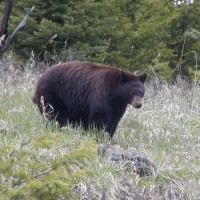 Yellowstone: Birds, Bears & Wildlife FULL - See our fall departures!June 5 - 11, 2025
Yellowstone: Birds, Bears & Wildlife FULL - See our fall departures!June 5 - 11, 2025 -
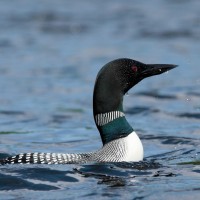 Michigan’s Isle Royale & Keweenaw PeninsulaAugust 15 - 23, 2025
Michigan’s Isle Royale & Keweenaw PeninsulaAugust 15 - 23, 2025 -
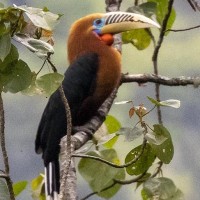 Biodiverse Bhutan: Birds, Mammals & Beyond FULL - Check out Southern India’s Western Ghats!November 5 - 20, 2025, w/Panna Tiger Reserve extension
Biodiverse Bhutan: Birds, Mammals & Beyond FULL - Check out Southern India’s Western Ghats!November 5 - 20, 2025, w/Panna Tiger Reserve extension -
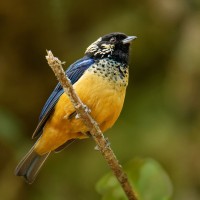 Western Panama: Tranquilo BayJanuary 17 - 24, 2026, w/Mt. Totumas extension
Western Panama: Tranquilo BayJanuary 17 - 24, 2026, w/Mt. Totumas extension
-
Essential Information +
Pace & Protocols +
Packing List +
Suggested Reading List +
Useful Links +
Photo credits coming soon.
























